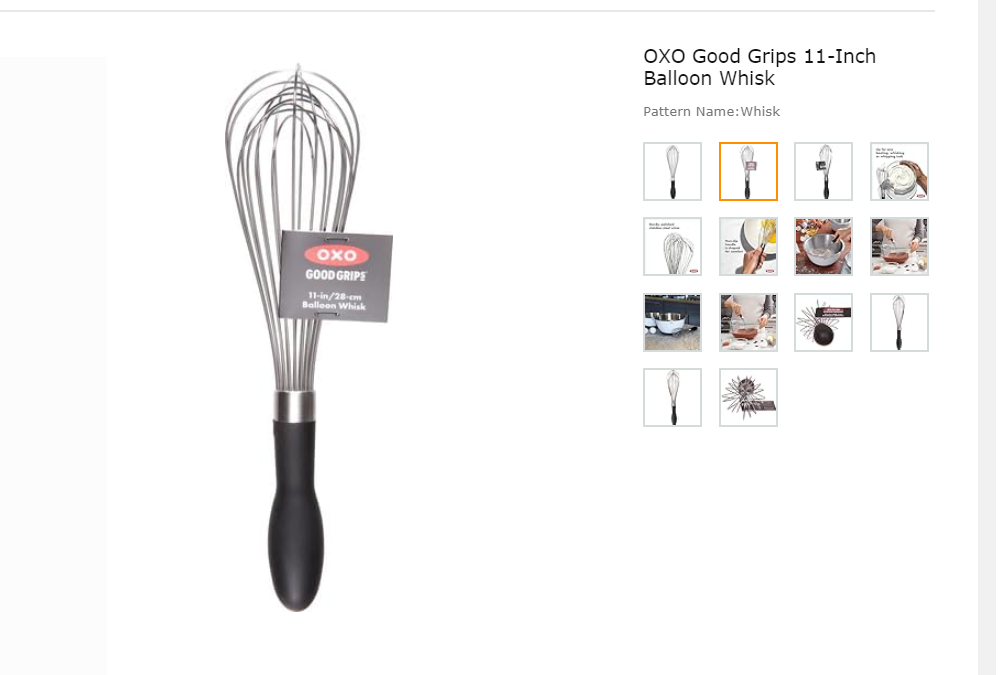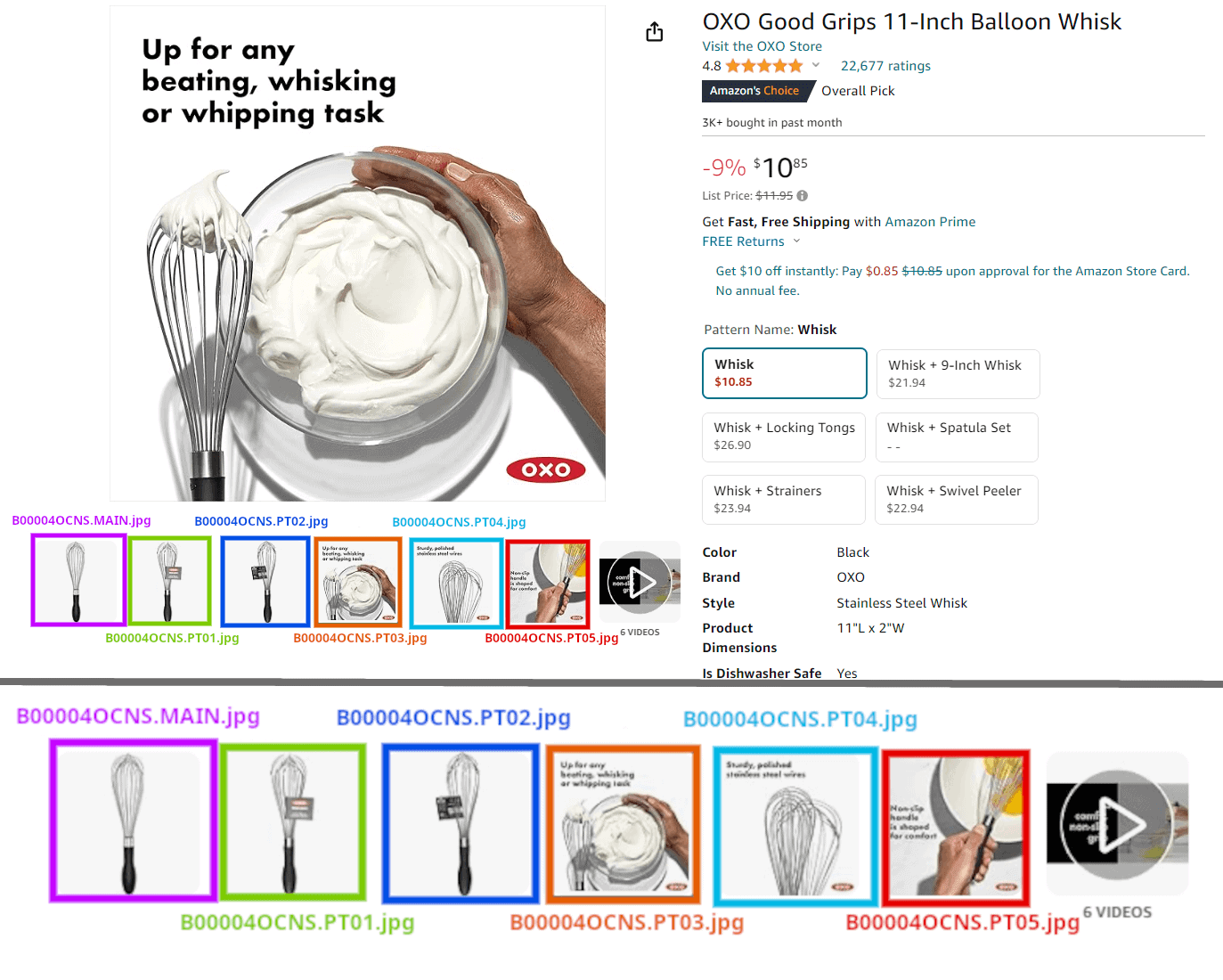This Amazon images guide explains everything you need to know to improve your images as an Amazon seller. In Part 1 we looked at why having high quality images is so important.
In this section we will look at the technical requirements for Amazon images as a seller.
For anyone selling on Amazon, adhering to the technical requirements for images is essential.
Things you should know about:
- How to name your Amazon images.
- Understanding category-specific requirements.
- Using alt-text properly on Amazon.
- A look at Amazon Rekognition and how it’s used.
Part 1 : How to name your Amazon images
Amazon has specific guidelines that ensure your images meet their standards and are easily accessible by their system.
Here’s a practical approach to naming your images:
- Use the Product Identifier: Start by naming your image file with the product identifier such as the ASIN (Amazon Standard Identification Number), ISBN, EAN, or UPC.
For example, if your product’s ASIN is B01BH7759G, your image file name should start with that string. If you sell on other marketplaces then you may prefer to use your ISBN/EAN/UPC code as the identifier.
If you only sell on Amazon, or want to keep your Amazon images separate from your images for other marketplaces, then using your product’s ASIN makes sense. - Name secondary images correctly: On Amazon, the main image can be named as B01BH7759G.MAIN.jpg, while additional images can be named as B01BH7759G.PT01.jpg, B01BH7759G.PT02.jpg, etc. This helps you keep track of images and ensures that Amazon’s system can accurately process and display them properly.
- Avoid Special Characters and Spaces: Special characters like @, #, $, %, etc., should be avoided as they may cause errors during the upload process. But if you’re using the naming convention described above, this shouldn’t be a problem for you anyway.
- Organizing your images for different countries: The naming convention applies across all countries. So whether you’re selling on Amazon USA, UK, Germany, Japan or somewhere else, keep the same naming format.
To keep your images well organized in your system, I recommend storing them in folders named for that country. For example, your images might have localized text on each infographic and you don’t want to get them mixed up. - Name them correctly in every marketplace: It’s very important to adhere to Amazon’s naming system in all countries. If you don’t, and you want to upload country specific images, then strange things can happen such as images not being updated or overwriting images in other countries without meaning to.
This video shows you how to upload country specific images to different Amazon marketplaces. Use this if you want to upload different images to different countries on Amazon.
This article here contains full instructions: How to Upload images in different languages to Amazon Marketplaces
Part 2. Are there different technical requirements for images in different Amazon categories?
Yes.
Image requirements can vary across different product categories on Amazon. Understanding these variations will help you tailor your images to meet the specific guidelines and ensure compliance.
Some fundamentals across all categories are for the main image include:
- Images must be in a JPEG, TIFF, PNG, or GIF file format. JPG format is preferred
- Color profile must be sRGB.
- Image size must be a minimum of 1500 pixels and a maximum of 10,000 pixels per side.
- Product should fill at least 85% of the frame.
- Color must accurately represent prouct with a neutral white balance overall.
Image Guidelines on Amazon by Category
| Category | Special rules for images | Amazon Style Guide (link to pdf) |
|---|---|---|
| Home and Kitchen |
|
Link to Amazon Style Guide for Home and Kitchen (pdf) |
| Fashion & Clothing |
|
Link to Amazon Style Guide for Fashion & Clothing (pdf) |
| Consumer Electronics |
|
Link to Amazon Style Guide for Consumer Electronics (pdf) |
| Sports and Outdoor |
|
Link to Amazon Style Guide for Sports and Outdoor (pdf) |
| Tools |
|
Link to Amazon Style Guide for Tools (pdf) |
| Toys |
|
Link to Amazon Style Guide for Toys (pdf) |
Part 3: The Importance of alt-text on Amazon Images
Small details can make a big difference. Using alt-text in your images is a technical requirements and it also means Amazon better understands your product. Here’s why alt-text matters:
Accessibility
- For Visually Impaired Users:
- Alt-text ensures that visually impaired users can understand the content of your images through screen readers.
- This promotes inclusivity and allows all potential customers to access and understand your product details.
Search Engine Optimization (SEO)
- Improves Indexing & Increases Traffic:
- Alt-text helps search engines better index your images, which can boost the visibility of your products in search results.
- Better visibility in search results can lead to higher traffic to your product listings, increasing the likelihood of sales.
Compliance & User Experience
- Meets Accessibility Standards:
- Providing alt-text helps meet accessibility standards, ensuring that your listings are compliant with regulations and best practices.
- Alt-text provides additional context for images, which can help users better understand your product features and benefits.
Key Benefits
- Broader Audience Reach:
- By making your listings accessible to more users, you widen your potential customer base.
- Higher Conversion Rates:
- Improved accessibility and visibility can lead to higher engagement and conversion rates.
In summary, optimizing alt-text for your Amazon images is an essential step in creating accessible, searchable, and successful product listings. It benefits users with disabilities and enhances your product’s reach within search, contributing to sales growth.
Part 4: How does Amazon use Rekognition on it’s ecommerce platform?
What is Amazon Rekognition?
Amazon Rekognition is a deep learning-based image and video analysis service by Amazon Web Services (AWS). It detects objects, scenes, and faces, recognizes celebrities, analyzes facial expressions, and performs vaious recognition analysis.
The ecommerce side of Amazon leverages Rekognition to better understand the content on it’s site. As a seller, if you understand how Rekognition is being used, you can use this to your advantage.
Improved Search and Discovery:
- Visual Search: Customers can upload a product photo, and Rekognition identifies and displays similar products, simplifying the search process.
Enhanced Product Listings:
- Automated Image Tagging: Rekognition tags images with relevant keywords, improving product visibility in search results.
Content Moderation:
- Ensuring Compliance: Detects inappropriate (adult) or non-compliant content in user-generated images, maintaining high-quality standards.
Personalized Recommendations:
- Better Customer Insights: Analyzes images and videos to provide insights into customer preferences, enabling personalized product recommendations.
OCR Text Analysis in Images
Rekognition includes Optical Character Recognition (OCR) capabilities, offering several benefits:
- Automated Data Extraction: Extracts text from product labels and packaging so it can understand better what’s going on.
- Compliance and Quality Control: Verifies that text on packaging meets regulatory standards.
- Checks claims: Amazon better understands what is being written in images. Images with non compliant claims easily get identified by Amazon.
- Improved Searchability: Enhances keywords and metadata from extracted text, improving product searchability.
By understanding how Amazon Rekognition works, sellers can use it to their advantage to help improve their listings and visibility.
I recorded this video in response to the Seller Sessions podcast talking about images. 8 Figure Seller Sim Mahon – 3 Image Hacks All Sellers Should Be Using
Action Steps
To ensure you’re on the right path, here’s a quick checklist of action steps you can take right now to improve the technical points of your images on Amazon:
- Audit Your Current Images: Review all your existing product images to ensure they meet Amazon’s technical requirements. Rename any files that do not follow best practices.
- Research Category-Specific Guidelines: Make sure you’re familiar with the image requirements for each category you sell in. Adjust your images as needed to comply.
- Implement best practice for file names: Update your image file names across all countries to ensure that your images always stay correct and don’t get overwritten by mistake.
- Update your Alt-Text to be more descriptive and keyword-rich, enhancing both SEO and accessibility.
- Stay Updated With Amazon’s Policies: Amazon occasionally updates its policies and guidelines. Make it a habit to stay informed about any changes and adjust your practices as needed to stay compliant.
Conclusion
Investing time and effort into mastering the technical requirements for images on Amazon is more than just following a set of rules. It’s about driving sales. Don’t neglect it!



